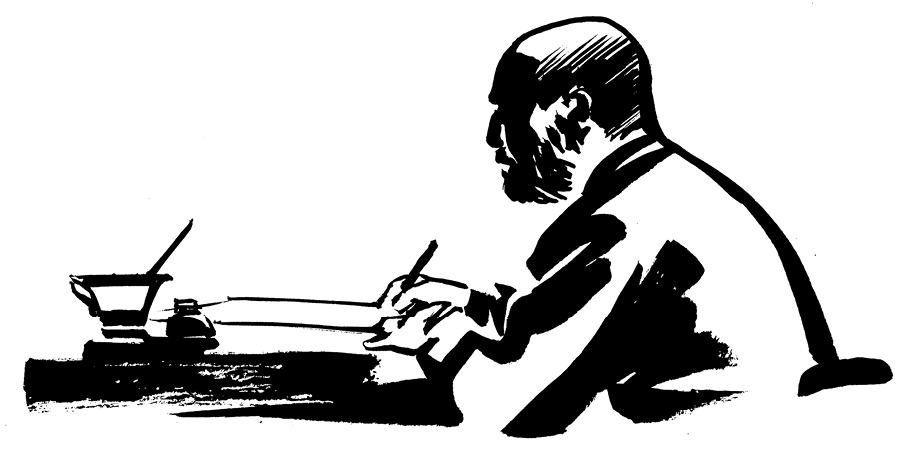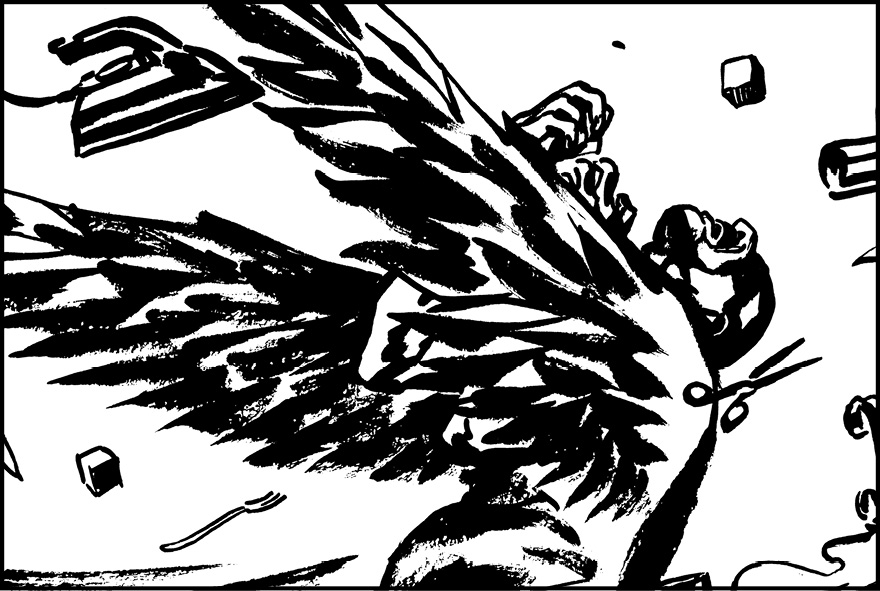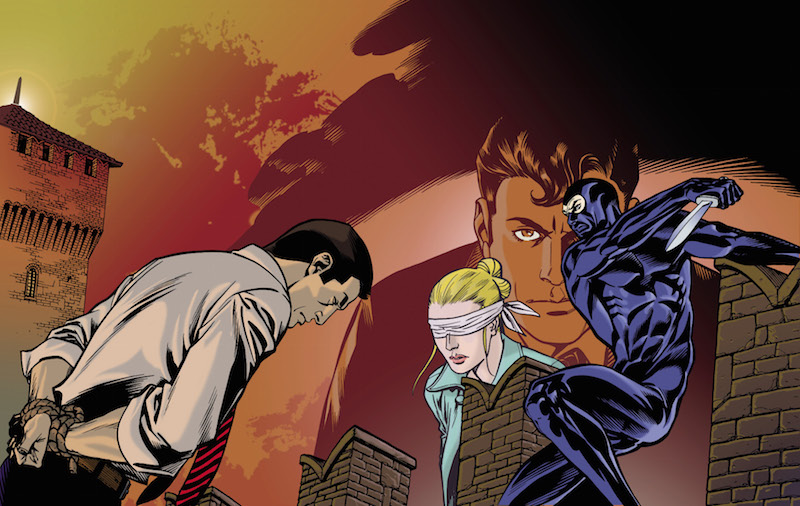"Comics are called the invisible art, because its language is based on the interaction with the reader." Thus begins the conversation with Giuseppe Palumbo, one of the most up and coming cartoonists, awarded at the Lucca Comics as best Italian cartoonist. It is his hand that has for fifteen years drawn the adventures of Diabolik, illustrated books, collaborated in exhibitions and, in recent months, created works that illustrate his homeland, Lucania. With a diploma in archaeology, living in Bologna, Giuseppe, as all artists, lives in a world without borders where seeing things differently is a prerequisite essential to fuelling creativity. Even in the world of comics, which is experiencing a rebirth. "The situation today is quite fluid. Until some time ago there was a debate between popular cartoons, Tex, Diabolik to name a few, and the authored comic strip, the one found in major magazines such as Linus, Frigidaire, or Comic Art. With time this subdivision has disappeared because magazines have phased down and so has their role, which is no longer relevant. Authors like me were absorbed by popular cartoons or they have found a place in publishing houses distributing in bookstores such as Coconino Press or Catch-22. This phenomenon has eliminated the distinction there once was, and today books by cartoonists like Zercocalcare or Gipi are sold in best seller editions. We are talking about eighty thousand copies, a mass phenomenon. New technologies also contributed to this situation, by facilitating dissemination and use. They are allowing young authors to post on the Web their drawings quickly becoming a viral phenomenon of large proportions."

But what characterizes the narrative of a comic book compared to other art forms, such as a novel or a movie? "Today a comic strip is defined as a graphic novel, a true graphic novel, which keeps from the novel the typical narrative structure interpreting it in a language that is both visual and textual. The narrative is then developed by sequential images and arguments. The contents may have an intimate or autobiographical style, unlike traditional comics that usually fall under the rules of the genre. Western, horror, superheroes, thrillers. Of course, there are also cases steeped in the intimacy of autobiography, such as Dylan Dog by Tiziano Sclavi. Or the legendary Ken Parker, who, while coming within the western genre, inserted in his stories issues from current events, such as strikes, typical of the reality of the seventies in which the character was born. This is one of the advantages of comics: it allows an interaction with the immediate reality. It takes little time to produce comic strips with respect to a film or a novel, for example, so interpretation and connection with reality is rapidly done, facilitated today by the Web." But then, if this art is so immediate and if they call it the invisible art, why has no one ever created cartoons for the blind?

"As it is a visual language, it’s of course difficult to translate this for someone who doesn't see. To make it visible, it should be represented in three dimensions, like Braille letters which have a density that is not only metaphorical. During my theatrical experience for the review Different Abilities on stage with the Gruppo Elettrogeno, on the occasion of the show Brindisi con boia, I was drawing live on stage while Emidio Clementi would say what I was drawing. I made an attempt at making three-dimensional drawings using an ink that swelled when drying, but it didn't work. In fact a tale is to decode words while a drawing is to decode signs. To really make them readable, we should use simple signs, such as those of Peanuts, where the shapes and density of signs are minimal. Diabolik already has too many signs, useful for creating realism, but sometimes difficult even for those who see." Aren't comics meant to be a popular and immediate art? How can it not be comprehensible for all, even those who see? "Let me explain it to you right away. In comics, the invisible art par excellence, each story is made of images in sequence that narrate a portion of the story. Then there is some white space between one image and the next, in which we imagine the development of the action between one scene and the other. Unlike in the movies, where you are more passive, you are guided by the flow of images, the comic strip requires from you a constant processing going from one image to the other. What the reader elaborates in his own mind is almost 80% of the story, then you need to turn back the pages to create and correct the development of the story. What guides readers are small signs relating to the narrative, signs that guide them in the reconstruction of the story. The challenge is this: if we could find ways to also express to blind people these little hooks; that would do the trick. In the end, the development of the story is one’s own, and therefore could be done with eyes closed." Sensitive and passionate on this matter, Giuseppe Palumbo is now working on a project dedicated to Carlo Levi which is exploring a way of expressing oneself in a situation of disability. The great Italian writer and painter, author among other titles of the famous Christ Stopped at Eboli, lived his last years with a visual impairment during which he wrote the opera Quaderno a cancello, entitled like this because his notebook was made with a grid that allowed him to follow the lines. Serene and resilient, Levi never stopped working. "To translate in images this book is a true challenge. Carlo Levi wrote in this special notebook transforming into an opportunity, as do real artists, what seemed like loss. Narratives, after all, always begin with a mnemonic base and the images that he often wrote about were recreated and enriched memories from reflections made in darkness, as we all do, really, blind or not." As we wait for the first comic book for people with vision loss and the latest book by Palumbo dedicated to Carlo Levi, let us continue imagining that, with eyes opened or closed, it remains one of the best ways to make our lives more beautiful.





.png)